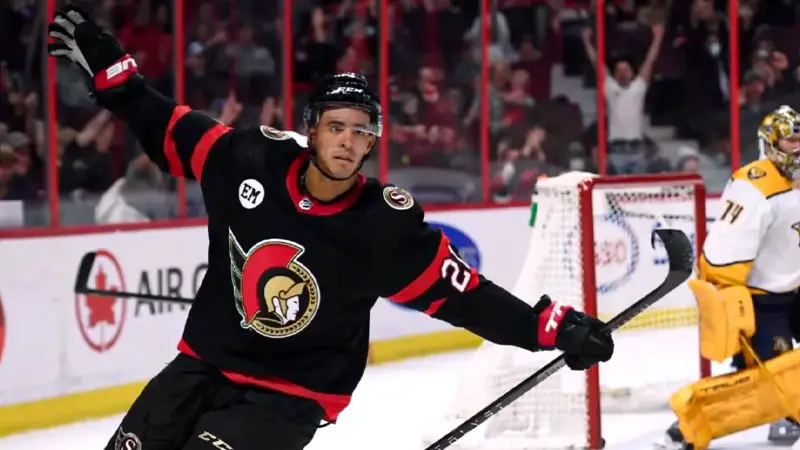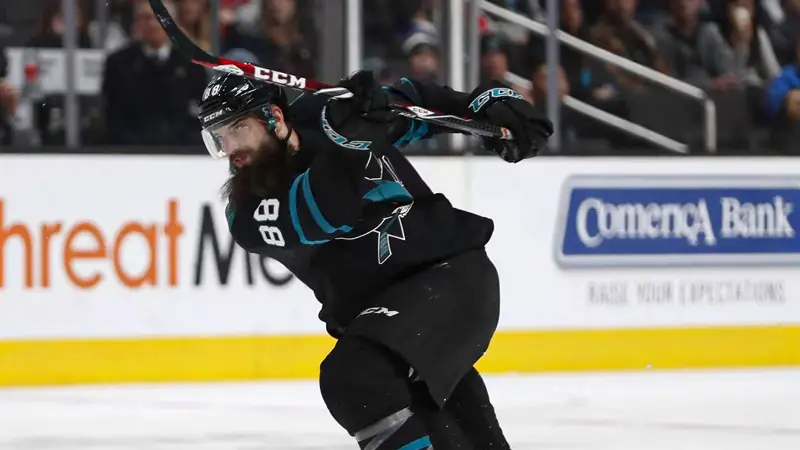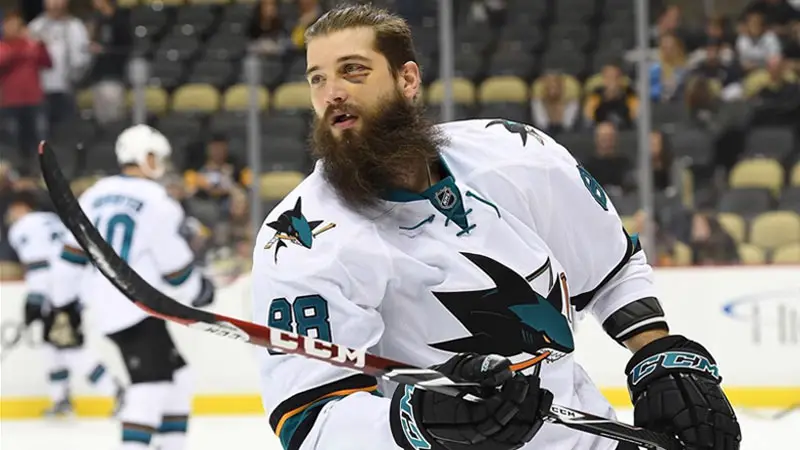Whether you’re a hockey enthusiast or a fantasy sports novice, understanding the essentials of fantasy hockey gameplay is key to navigating this thrilling experience.
From crafting your dream team through a strategic draft to making crucial in-season decisions, this guide will illuminate the path for both beginners and seasoned players.
Get ready to delve into the intricacies of player selection, lineup management, and the thrill of the playoffs as we explore the fundamental aspects of how to play fantasy hockey and elevate your hockey fandom to a whole new level.
What Is Fantasy Hockey?
Fantasy hockey is a type of online fantasy sports game where participants, often referred to as fantasy hockey team owners, build and manage their own virtual hockey teams.
These teams are comprised of real NHL (National Hockey League) players, and participants compete against each other based on the statistical performance of these players in actual NHL games.
Here’s a basic overview of how fantasy hockey typically works:
Drafting
At the beginning of the fantasy hockey season, participants take turns selecting real NHL players to be part of their fantasy team.
This is usually done through a draft, where each participant selects players in a predetermined order until all the teams have filled their rosters.
Player Positions and Categories
Fantasy hockey teams are structured with players assigned to specific positions, such as forwards, defensemen, and goalies. Each player earns fantasy points based on their real-life performance in various statistical categories.
Common scoring categories include goals, assists, plus/minus, penalty minutes, power-play points, shots on goal, and goalie statistics like wins, save percentage, and shutouts.
Head-to-Head or Rotisserie Formats
Fantasy hockey leagues can operate in different formats. In head-to-head leagues, teams compete against each other every week, and the team with better overall statistics for the week wins.
In rotisserie leagues, teams accumulate points over the entire season based on their rankings in various statistical categories.
Trades and Transactions
Throughout the season, team owners can often make trades with each other or pick up free agents (players not originally drafted) to improve their team.
This adds a strategic element to the game as participants must actively manage their rosters to adapt to injuries, player slumps, or other factors.
Playoffs and Championships
Fantasy hockey leagues typically have a playoff format at the end of the NHL regular season, where the top teams compete for the league championship.
Fantasy hockey provides fans with an added layer of engagement and excitement as they follow the performances of their selected players in real NHL games.
It’s a social and strategic activity that involves a combination of sports knowledge, statistical analysis, and decision-making skills.
Rules of Playing Fantasy Hockey

The specific rules of playing fantasy hockey can vary depending on the platform or league you’re using, but here are some general guidelines that are commonly found in many fantasy hockey formats:
Drafting
- Teams typically consist of a mix of forwards, defensemen, and goalies.
- The draft order is often randomized, and participants take turns selecting players until each team has filled its roster.
Scoring Categories
- Points are awarded based on the statistical performance of players in real NHL games.
- Common scoring categories include goals, assists, plus/minus, penalty minutes, power-play points, shots on goal for skaters, wins, save percentage, and shutouts for goalies.
- Different fantasy leagues may have variations in scoring, so it’s essential to understand your league’s specific scoring system.
Lineups
- Team owners set their lineups before a specified deadline, usually weekly.
- Lineups typically include a combination of forwards, defensemen, and goalies.
- Pay attention to player injuries, suspensions, or lineup changes in the NHL, as these can affect your fantasy lineup.
Trades and Transactions
- Team owners can often propose trades with other teams or pick up free agents from the available player pool.
- There may be restrictions on the number of trades or free-agent acquisitions a team can make in a given period.
Head-to-Head or Rotisserie
- Leagues may operate in either head-to-head or rotisserie formats.
- In head-to-head leagues, teams compete against each other weekly, with the winner determined by specific categories.
- Rotisserie leagues accumulate points over the entire season based on team rankings in various statistical categories.
Playoffs
- Many fantasy hockey leagues have playoffs at the end of the NHL regular season.
- Teams that qualify for the playoffs compete in a bracket-style format to determine the league champion.
Scoring and Standings
- League standings are based on the cumulative points earned by each team throughout the season.
- The team with the most points at the end of the season is typically declared the league champion.
League Settings
- Familiarize yourself with specific league settings, including any custom rules or variations that may be in place.
It’s crucial to carefully read and understand the rules and settings of the specific fantasy hockey league you join, as variations can exist.
Many fantasy hockey platforms provide guides and resources to help participants understand the rules and maximize their enjoyment of the game.
Team Formation of Fantasy Hockey

In fantasy hockey, team formation involves selecting and managing a roster of NHL players to compete in various statistical categories.
The team formation process typically includes drafting players, setting lineups, making trades, and managing player acquisitions.
Here are the key components of team formation in fantasy hockey:
Drafting Players
The foundation of a fantasy hockey team is laid during the drafting phase. Team owners select real NHL players to fill roster positions, including forwards, defensemen, and goalies.
The drafting order is often determined randomly, and participants take turns choosing players until all roster spots are filled.
Roster Composition
Teams typically consist of a set number of players in each position, mirroring the structure of an actual hockey team.
This may include a combination of centers, left and right wings, defensemen, and goaltenders. The specific requirements can vary based on league settings.
Active Lineups
Before each fantasy hockey week, team owners must set their active lineups. This involves choosing which players to start in each position for upcoming games. Strategic decisions here can impact the team’s performance for the week.
Player Flexibility
Some fantasy hockey leagues allow flexibility in player positions, enabling owners to slot players into different positions based on their actual in-game roles.
This adds strategic depth as owners optimize lineups for maximum point potential.
Bench and Reserve Players
In addition to the active lineup, teams usually have bench and reserve spots. Bench players are substitutes who do not contribute to the team’s weekly point total, while reserve spots may be used for injured or inactive players.
Injury Considerations
Fantasy hockey team formation involves ongoing assessment of player injuries and health.
Team owners must monitor NHL injury reports and make informed decisions about whether to start or bench players based on their availability and condition.
Strategic Planning
Successful fantasy hockey team formation goes beyond simply picking star players. It involves strategic planning, taking into account factors such as player schedules, matchups, and team performance.
Savvy team owners actively manage their rosters, making trades and acquisitions to address weaknesses and capitalize on opportunities.
In essence, fantasy hockey team formation is a dynamic process that requires a combination of drafting skills, in-season management, and strategic decision-making to assemble a competitive roster capable of earning points across various statistical categories.
How to Play Fantasy Hockey?

Playing fantasy hockey involves several steps, from creating a team to managing it throughout the NHL season. Here’s a guide on how to play fantasy hockey:
Choose a Platform
Decide on a fantasy hockey platform or league to join. There are various online platforms like ESPN, Yahoo, and the official NHL Fantasy Hockey. Each platform may have slightly different rules and scoring systems.
Create or Join a League
Create your own fantasy hockey league or join an existing one. Leagues can be private, where you invite friends to join, or public, where you join a league with strangers.
Pay attention to the league settings, including the scoring system, roster size, and any custom rules.
Understand Scoring System
Familiarize yourself with the scoring categories and point values used in your league.
Common scoring categories include goals, assists, plus/minus, penalty minutes, power-play points, shots on goal for skaters, and various goalie statistics.
Draft Your Team
Participate in the league’s draft to build your fantasy hockey team. The draft order is often randomized, and teams take turns selecting players until each roster is filled. Pay attention to position requirements and overall team balance.
Set Your Lineup
Before each fantasy hockey week, set your lineup by choosing which players to start in each position. Be mindful of player injuries, suspensions, and matchups. Some leagues have weekly lineup locks, while others allow daily changes.
Monitor Player Performance
Keep track of how your players perform in real NHL games. Follow player news, injury reports, and lineup changes. Stay engaged throughout the season to make informed decisions about starting, benching, trading, or acquiring players.
Make Trades and Acquisitions
Many fantasy hockey leagues allow trades between teams, and you can also pick up free agents from the player pool.
Evaluate your team’s needs and the strengths and weaknesses of other teams to make strategic trades. Be aware of any limits on trades or acquisitions.
Participate in Playoffs
If your league has a playoff format, make sure your team qualifies by performing well during the regular season.
The playoffs typically involve head-to-head matchups, and the top teams compete for the league championship.
Stay Engaged and Have Fun
Fantasy hockey is a dynamic and social activity. Engage with other team owners, discuss trades, and enjoy the experience.
While competition is part of the fun, the primary goal is to have an enjoyable time following and managing your virtual hockey team.
Remember that the specific steps and rules can vary, so it’s essential to read and understand the guidelines provided by your chosen fantasy hockey platform or league.
Scoring Systems of Fantasy Hockey
The scoring system in fantasy hockey involves assigning points to the statistical performances of NHL players during real-life games.
The specific scoring categories and point values can vary depending on the fantasy hockey league or platform you are using. Below are some common scoring categories and examples of point values:
Skater Scoring
- Goals: Typically, a set number of points (e.g., 2 points) are awarded for each goal a forward or defenseman scores.
- Assists: Points are awarded (e.g., 1 point) for each assist recorded by a skater.
- Plus/Minus: Players earn or lose points based on the plus/minus rating, indicating whether their team scored more or fewer goals while they were on the ice.
Shots on Goal
Points can be awarded for the number of shots on goal a skater accumulates during a game.
Special Teams Points
- Power Play Points: Extra points may be awarded for points scored on the power play.
- Short-Handed Points: Some leagues award points for short-handed goals or assists.
Penalty Minutes
Penalty minutes can result in either positive or negative points, depending on the league settings.
Goaltender Scoring
- Wins: Goalies earn points for each game their team wins.
- Saves: Points are often awarded for the number of saves a goalie makes.
- Shutouts: Additional points may be given for a goalie recording a shutout.
Goalie Ratio Statistics
- Goals Against Average (GAA): Points may be awarded based on a goalie’s GAA.
- Save Percentage (SV%): Points may be given for a goalie’s save percentage.
Performance Bonuses
Some leagues offer bonus points for exceptional performances, such as hat tricks, multiple-point games, or extraordinary individual efforts.
It’s important to note that each fantasy hockey platform or league can have its own unique scoring system, and point values may be adjusted based on league preferences.
Before participating, carefully review the scoring rules and settings provided by your chosen platform or league to understand how points are awarded for different player performances.
Additionally, some leagues use head-to-head matchups, while others use a rotisserie-style scoring system where teams accumulate points over the entire season based on their rankings in various statistical categories.
FAQs
How do I start playing fantasy hockey?
To begin, choose a fantasy hockey platform, create or join a league, and draft your team.
Familiarize yourself with scoring rules and set your lineup weekly. Stay engaged by monitoring player performance, making trades, and navigating the playoffs for a shot at the championship.
What’s the importance of the draft in fantasy hockey?
The draft is crucial as it forms the core of your team. Make strategic picks to balance positions, consider player roles, and account for depth. A well-executed draft sets the foundation for a competitive fantasy hockey squad.
How often can I adjust my fantasy hockey lineup?
The frequency of lineup adjustments varies by league. Some have daily changes, allowing you to react to real-time events.
Others lock lineups weekly. Stay informed about player news and injuries to optimize your lineup for the best possible performance.
Can I make trades during the fantasy hockey season?
Yes, most leagues allow trades. Evaluate your team’s needs, identify potential trade partners, and propose mutually beneficial deals.
Trading is a strategic element, enabling you to improve your team’s overall strength and address specific weaknesses.
What should I consider during the fantasy hockey playoffs?
Qualifying for the playoffs is the goal. Pay attention to player schedules, maintain an active lineup, and make strategic moves.
A well-managed team during the playoffs can lead to success, so stay informed and make calculated decisions based on matchups and player performances.
Wrapping Up
Fantasy hockey is a captivating fusion of strategic decision-making and the thrill of real NHL action.
As you embark on this virtual journey, remember that success lies not only in drafting star players but in the ongoing management of your team. Stay engaged, adapt to player performances, and relish the dynamic nature of the sport.
Whether you’re vying for playoff success or simply enjoying the camaraderie with fellow fantasy hockey enthusiasts, the experience is uniquely yours.
So, lace up your virtual skates, embrace the excitement of the draft, and witness your carefully crafted team strive for victory.
Fantasy hockey isn’t just a game; it’s an immersive celebration of the sport, where fans become managers, and every stat line carries the potential for triumph.
May your fantasy hockey adventure be filled with strategic triumphs, memorable matchups, and the sweet taste of virtual victory on the frozen virtual pond.








James Felix